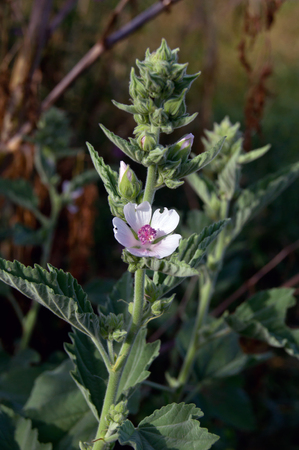 />
/>
Latin Name: Althaea officinalis
Family: Malvaceae
Genus: Althaea
Common Names: marsh-mallow, marsh mallow, or common marshmallow
Origin and Distribution Area: native to Europe, Western Asia, and North Africa
Habitat: is found on the banks of rivers and in salt marshes, preferring moist, sandy soils
Parts used: flowers, leaves, roots
Botanical information: The stem is upright and simple. Its height is about 1 m, but sometimes it can be 2 m. The leaves are roundish, ovate-cordate, thick, and velvety on both sides. The flowers are smaller than of the common mallow and of a pale color. The period of blooming is lasting from August to September, and are followed by the flat.
CHEMICAL COMPOSITION
The marshmallow roots contain:
- mucilage (up to 35%)
- starch (up to 37%)
- pectin (10-11%)
- sugars
- asparagine
- betaine
- carotene
- lecithin
- phytosterol
- mineral salts
- fatty oil (up to 1, 7%)

METHODS OF USE
Marshmallow is used in the form of:
- syrup
- infusion
- decoction
- tinctures
- extract
- mixture
PREPARATION AND DOSAGE
Marshmallow infusion recipe:
- Take 6.5 grams of marshmallow roots, pour 100 ml of lukewarm water, infuse for 1 hour, then strain. Take 1 tablespoon in two hours.
- Take 3 teaspoons of marshmallow roots and pour 200 ml of boiled water (of room temperature) over it, steep for 8 hours, then carefully strain.
Marshmallow tincture recipe:
Take 20 g of marshmallow roots and pour 500 ml of vodka (40%) over the roots. Leave the closed container in a dark place, infuse for 10 days, then strain. Take 10-15 drops before meals 3 times a day.
“Nature does nothing uselessly”
Aristotle
*This article is for informational purposes only. We suggest consulting with a physician before using these or any other herbal supplements.
